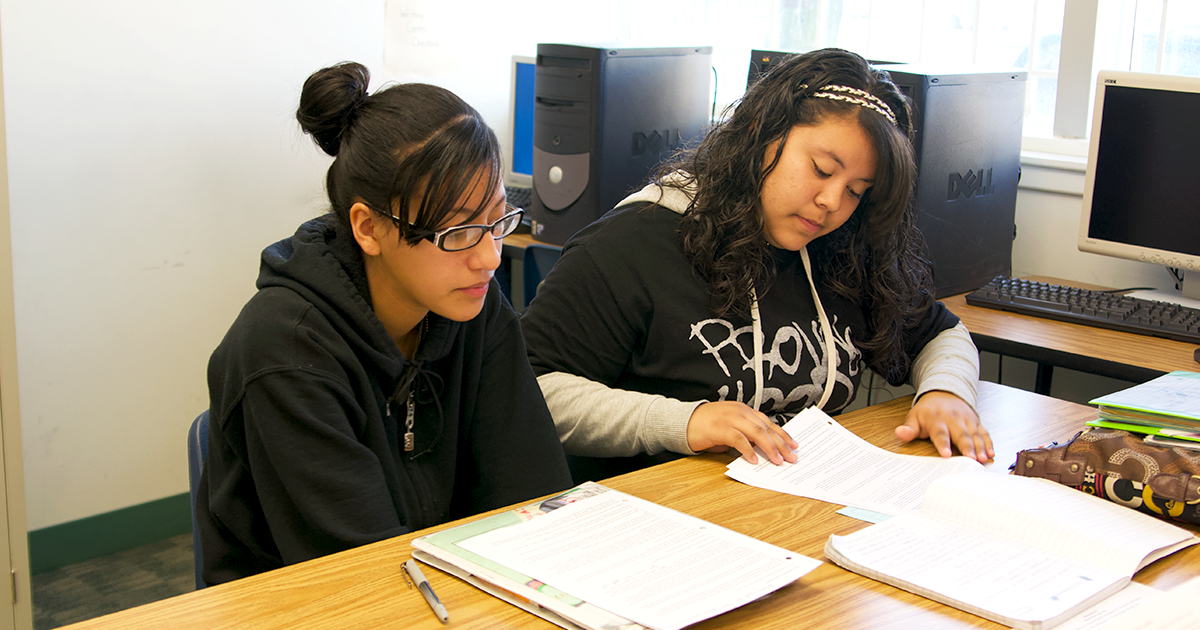Putting Science Instruction at the Center of Re-engagement: An Interview with the Lawrence Hall of Science's Ardice Hartry
Posted on by Frances Reade

This post, written by Frances Reade of the Hybrid and Distance Learning Collaborative (HDLC), first appeared on the Center for the Future of Teaching & Learning at WestEd blog and appears here with permission. The HDLC is a COVID Education Equity Response Collaborative initiative.
As school district staff across California return this fall, a main focus is likely to be providing socio-emotional learning (SEL) and supports. But a focus on SEL doesn’t need to come at the expense of content-area learning — especially when it comes to science.
To explore how science education can help re-engage students and rebuild strong cultures of collaboration and inquiry in schools, we sat down with Ardice Hartry, PhD, an Associate Director of the Lawrence Hall of Science and a partner in the Hybrid Distance Learning Collaborative (HDLC). This conversation has been lightly edited and condensed for clarity.
FR: We know from talking to participants in the HDLC that science was often de-prioritized in favor of ELA, math, and SEL this year. Many are concerned science could continue to take a backseat during recovery and re-engagement this fall. So why do you believe science could play a central role in re-engagement?
AH: Even when we were still in full distance learning, at the Lawrence we were hearing from different schools and districts in our networks that there was increased participation from the students on days when there was scheduled science instruction. Kids will come to a class session when they know it’s going to be science. We’ve also heard there were more kids leaving their cameras on during those lessons, and that students were more likely to be engaging in discourse with one another.
And that mirrors what a lot of the research has shown about science engagement, particularly in elementary schools, even when we were in the classroom before COVID. Kids always got very excited and enthusiastic about science. So I think that it would be a missed opportunity not to use science as a way to re-engage kids now that they’re heading back to the classroom.
Why is science instruction uniquely positioned to help with student re-engagement and socio-emotional learning?
Well, many kids have been out of school for over a year. Anecdotally, at the Lawrence we are hearing from districts that students may have forgotten how to interact with other students in the classroom. They forget about classroom behaviors and routines, and indoor voices. So it’s science can offer an opportunity to take that energy of being back together in the classroom, and put it towards learning and remembering what fun, collaborative classroom work can be like, and to fall back into the patterns of group work and group activity.
And because they’re doing something physical, and maybe there are tools or materials involved, science exploration gives them something to touch and hold on to. And again, this is anecdotal, but we’ve actually heard about increases in physical altercations between kids as they returned to school this spring. So giving students physical materials to work with together can productively focus their energy, physically and mentally, simultaneously.
We’ve heard from lots of HDLC districts, especially those in rural or suburban areas, that distance learning pushed teachers and students to get outside more for science exploration, and that they hope to continue this trend to boost engagement next year. Which is a great strategy for re-engagement! But how does outdoor exploration work for schools without easy or safe access to parks or beaches?
It doesn’t have to be about plants and green spaces! There are so many natural and science phenomena that can be observed outdoors any time. It’s a major equity issue that not everyone has access to safe, green spaces, so it’s important to recognize the value of “brown spaces” for science exploration if that’s what’s easily accessible at your school. But you don’t need plants at all to go outside and measure shadows throughout the day, or to observe weather phenomenon, or to do many other outdoor activities that can be really engaging.
Teachers and administrators sometimes feel there isn’t time for science, because ELA and math are often the top focal areas for the school or district. But can a strong science program be mutually reinforcing of ELA and math skills, instead of something that “detracts” from instructional time needed for those topics?
Of course! Science can still be ELA, right? When you’re learning science, you’re engaging in discourse, you’re reading texts, you’re writing text, you’re writing journal reflections and observations and notebooking, and you’re doing all these language-based activities in ways that are connected to the world around you. You’re using language arts to help you make meaning and sense of the phenomena you’re seeing.
We can argue a lot about whether it’s authentic or not authentic, but you’re doing it around a content area. And so it is, it can be ELA. So if you do have demonstrably higher engagement and kids are still engaging in the ELA practices that you want to focus on, why would you not do it?
Why not indeed! Thank you so much for chatting with me today, Ardice. I really hope some of our readers can use your ideas to make a case to keep science at the center of re-engagement efforts this fall and beyond.
Me too!
Ardice Hartry, PhD, is an Associate Director of the Lawrence Hall of Science. For the 20 years of her career, she has conducted research and evaluation in a variety of settings, starting with a large school district in California. She has led a range of project designs to understand how we can use science learning to increase equity, and how a focus on equity can improve the way science solves social problems. She holds graduate degrees in Anthropology and Political Science.
